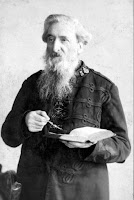It did not take more than a day or two before emails began arriving asking whether I had seen a film taken of St Albans in 1954. I hadn't then but I have certainly viewed it now, and what a little treasure it is. I have selected one screen shot which demonstrates what difference 61 years can make. Many of the film's scenes might have been taken recently, if we ignore the clothes people are wearing and the cars being parked or driven.
But this one is very different. When anyone now talks about the Sutton Road railway bridge most of us have to rely on the briefest of recollections, or use the notion of a simple bridge slung across a road with a steam train passing over; we just have no memory of it at all.
So, let me take you to the site. Sutton Road, where the Alban Way crosses between the Morrison's side and Coach Mews. Ordinary road, level, good sightlines, no overhead obstructions. What's the problem?
 |
| Former Sutton Road railway bridge looking towards Hatfield Road. Courtesy British Film Institute and East Anglian Film Archive. |
Some of us may have been told of the frequent flooding at the bridge, partly resulting from run-off from Hatfield Road, partly because cutting down into the ground brought the water table perilously close to the surface. Welcome to the Sutton Lakes. That's what many locals called this little spot during wet weather.
When this scene was taken the year was 1954; passenger rail services had stopped in 1951, but freight traffic – mainly coal and scrap – continued well into the 1960s. As soon as the line was officially closed the bridge deck was removed, but it was still a while before the re-levelling and widening of the road took place and you could drive a bus along Sutton Road. Not that one ever was driven along the road (unless you count the buses which turned into Sutton Road from Hatfield Road and reversed into Castle Road before making their return journey 'into town'.
This picture is a historical gem from a notorious little corner of St Albans' Own East End.






